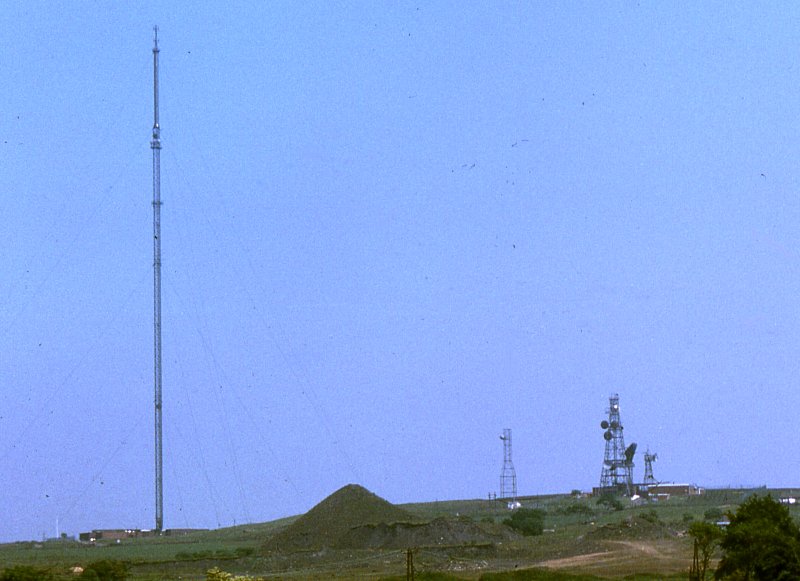
Photo © copyright 1977 Richard Lamont
Four structures are visible in this photo, which was taken in July 1977. The tall mast on the left was the main BBC VHF transmitter for central Scotland at the time, carrying both Band I (405-line) television and Band II FM radio antennas. (The TV transmission closed down in the mid 1980s, and FM moved to another nearby site at Black Hill.)
The three towers on the right appear to be clustered together, but the left-most of the three is some distance from the others. It's a link site in a US Naval Intelligence microwave route linking Thurso, Edzell and Londonderry. It used frequencies in the 7.9 – 8.25 GHz range. Each link site was even allocated a callsign! This one's was GXH15.[1][2]
The other two towers are BT's. The big one carried most of the links in operation at the time. The smaller one on the right carried the antennas for the original 1952 Manchester to Kirk o'Shotts television link: this used the 4 GHz band and was the first microwave chain built for the Post Office anywhere in the UK.[3] (The earlier London to Birmingham route used frequencies around 900 MHz – too low to count as microwaves.)
Back to Broadcast Bits
© Copyright 2006 Richard Lamont.